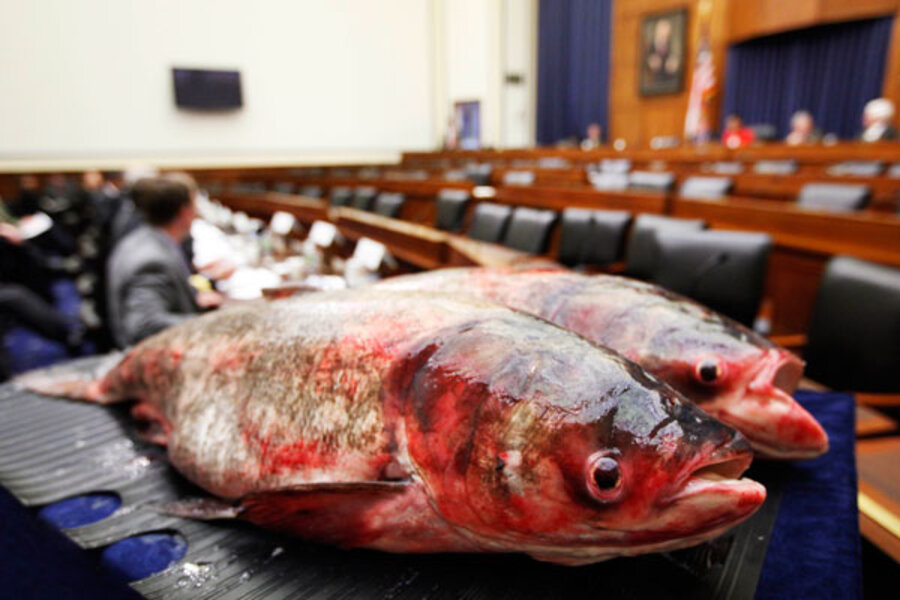Environmental groups oppose plan to fight Asian carp
Loading...
| Chicago
Indiana is backing Illinois in its refusal to shut down navigational locks of a canal that environmental groups say is an “aquatic superhighway” for Asian carp from the Mississippi River to the Great Lakes, where their presence poses environmental and economic disaster.
In a letter addressed to the White House this week, Indiana Gov. Mitch Daniels says he worries about “the needless expense of increased flood damage” he says will occur if the locks are closed.
The two states are now positioned against their Great Lakes neighbors in the debate about how best to address the possible infestation. At play is the future of the Chicago Sanitary and Ship Canal, a historic waterway that Illinois and Indiana officials say is crucial to the area’s economy but environmentalists say should never have been built in the first place. Environmental groups are asking for an “ecological separation” between the Mississippi River and Lake Michigan, which would require greatly reduced navigational traffic and the operation of the canal’s two navigational locks for only emergency measures such as flooding.
The White House worked to address the issue and to quell concerns that President Obama is favoring the interests of his home state. He met with state governors this week and released an inter-agency document that offers a framework to address the problem both immediately and over time. The document’s release was accompanied by a commitment of $78.5 million, which will be used to conduct research and build additional barriers.
However, in a conference call with reporters Friday, environmental groups said the framework is biased in favor of navigational interests and lacks urgency. They also argue that the Army Corps of Engineers, the leading federal agency in charge of the canal’s future, detailed several possible solutions but has failed to offer an effective plan that brings them together against a timeline.
“The framework never commits to separation, it only commits the Corps to studying it,” says Andy Buchsbaum, regional executive director of the National Wildlife Federation. “The way they’re considering closing the locks is not nearly aggressive enough. They are proposing [opening and closing it] up to 50 percent of the time, but they never consider 75 percent of the time [or more], which would be far more effective.”
“The framework now is like a list of ingredients without a recipe that, unless they’re in sequence, has the [outcome] of a disastrous meal, and we can’t have that,” says Mr. Buchsbaum, “We need a lock-by-lock management plan.”
The environmental groups say the White House plan is right to call for a concrete and chain-link fence between the canal and the Des Plaines River, and the construction of a third electric barrier on the canal. But they believe that local officials are wrong when they say that stunting the canal’s traffic will hurt the local economy. Citing a recent study by Wayne State University economists, they say the canal is responsible for less than 1 percent of total annual freight traffic moving though Chicago.
According to the American Waterways Operators (AWO), a trade association representing the tugboat, towboat, and barge industry, the canal is responsible for generating $30 million in annual revenue.
Last month Asian carp DNA was discovered on the Lake Michigan side of the Chicago area barrier, a finding that environmentalists say is why the situation is now an emergency needing immediate action.
Jennifer Nalbone, director and navigation and invasive species for Great Lakes United, a coalition of citizen advocacy groups invested in Great Lakes protection, says she is hopeful that the DNA means the Asian carp is present in “low numbers,” but calls for more tests, electronic fishing, and traditional netting to make sure they aren’t reproducing in greater numbers than expected.
Noting that a female Asian carp is capable of producing 1 million eggs in a lifetime, Ms. Nalbone says, “In a nutshell, they are perfect invaders, programmed to eat and breed.”





